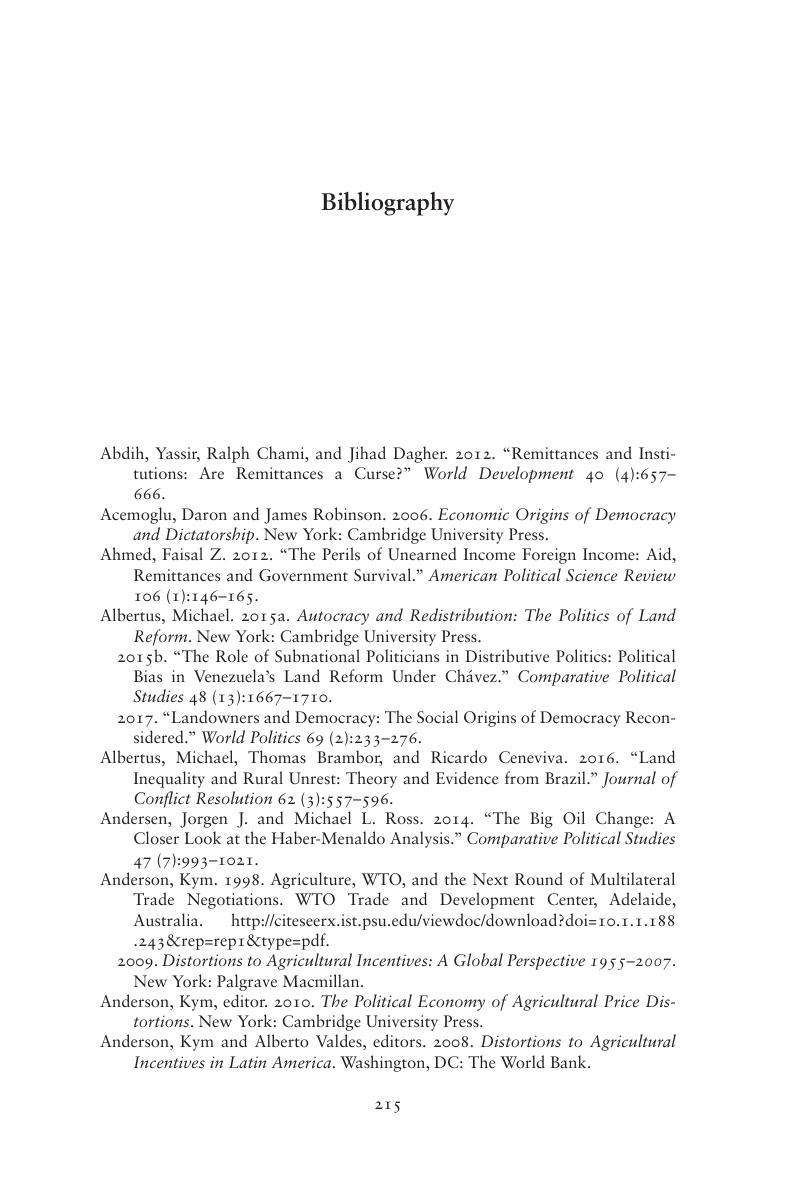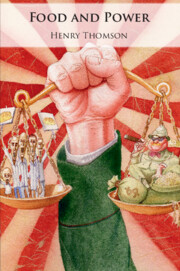Book contents
- Frontmatter
- Contents
- List of Figures
- List of Figures
- Acknowledgements
- 1 Introduction
- 2 Agricultural Policy, Regime Type, and Political Stability
- 3 Political Regime Type and Agricultural Policy Outcomes
- 4 Food Policy and Urban Unrest: A Global Analysis
- 5 Agricultural Rents, Landholding Inequality, and Authoritarian Regime Durability
- 6 Agricultural Policy and Authoritarian Regime Durability in Germany, 1878-1890
- 7 Agricultural Policy and Authoritarian Regime Durability in Malaysia, 1969-1980
- 8 Conclusion
- Bibliography
- Index
- References
Bibliography
Published online by Cambridge University Press: 31 May 2019
- Frontmatter
- Contents
- List of Figures
- List of Figures
- Acknowledgements
- 1 Introduction
- 2 Agricultural Policy, Regime Type, and Political Stability
- 3 Political Regime Type and Agricultural Policy Outcomes
- 4 Food Policy and Urban Unrest: A Global Analysis
- 5 Agricultural Rents, Landholding Inequality, and Authoritarian Regime Durability
- 6 Agricultural Policy and Authoritarian Regime Durability in Germany, 1878-1890
- 7 Agricultural Policy and Authoritarian Regime Durability in Malaysia, 1969-1980
- 8 Conclusion
- Bibliography
- Index
- References
Summary

- Type
- Chapter
- Information
- Food and PowerRegime Type, Agricultural Policy, and Political Stability, pp. 215 - 236Publisher: Cambridge University PressPrint publication year: 2019



